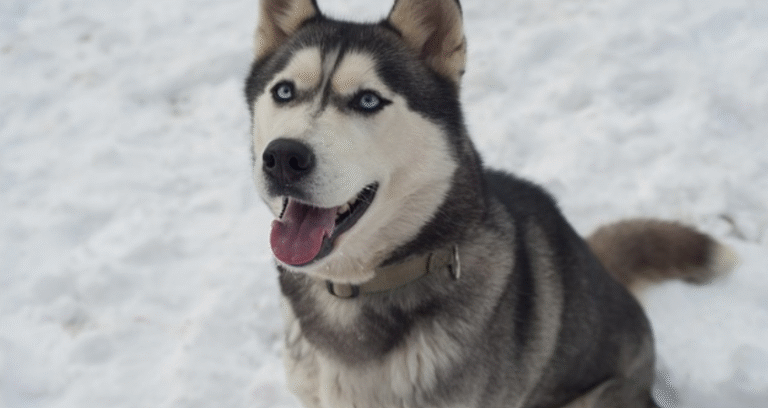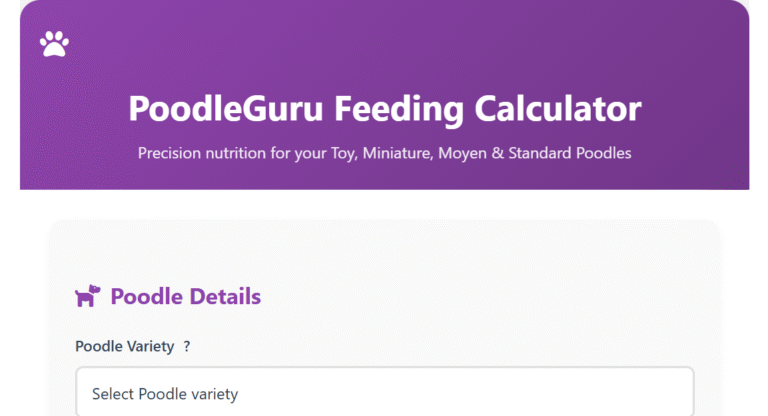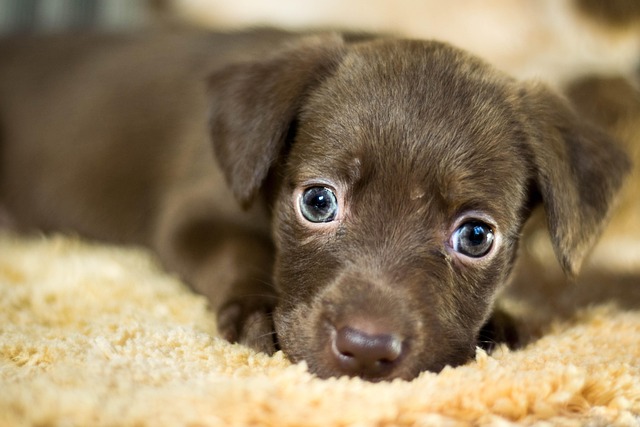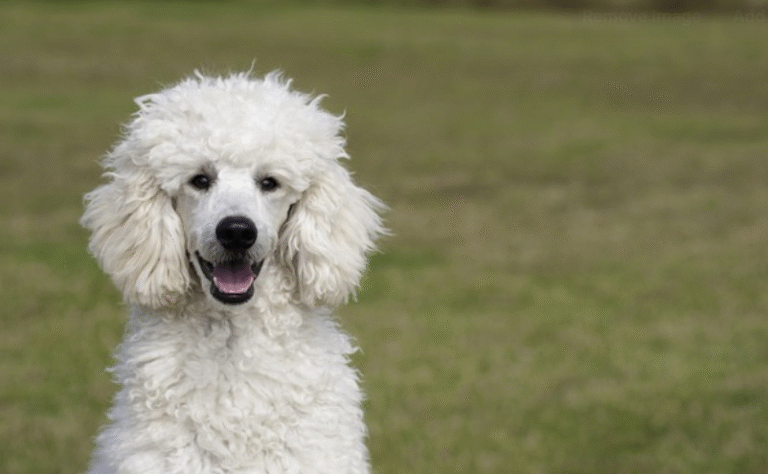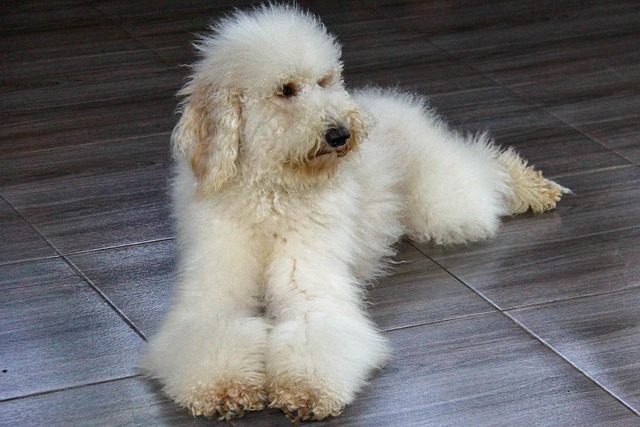A red miniature poodle is a small breed of dog, characterized by its vibrant red coat and energetic temperament. These pups are hard to miss with their fiery red coats and muscular stature. Consequently, they have grown into one of the most sought-after breeds by dog enthusiasts and families throughout the U.S.
Legions of fans admire them for their loving temperament. They teach us how to love, becoming fiercely loyal friends and trusted protectors of houses both large and small. Red miniature poodles are excellent companions for active households, thanks to their energetic nature and playful spirit.
Owners express pride in their poodle’s clever tricks, loving nature, and how these dogs make everyday life more enjoyable. Read on in the following pages to find out what’s so special about the red miniature poodle and why they’re one of the most popular dogs around.
What Are Red Miniature Poodles?

Red miniature poodles are a rare color variant of the popular poodle breed. Their rich, ruby-colored coats make them favorites of poodle fanciers. Since the first red miniature poodles came on the scene in the 1980s, it has taken the fancy of dog lovers everywhere.
These charming canines have inspired strong loyalty throughout the United States, from families to university campuses. They mix sweet good looks with a spirited temperament.
1. Defining “Red” Poodle Coats
Real, authentic red poodles will have a coat color that varies from rusty copper to a deep clear red. This shade is darker than apricot and doesn’t bleach out to lighter colors. Breed standards in American dog shows emphasize a rich, uniform color, although some degree of fading is natural as the dog ages.
Because coat color plays an important role in first impressions, red poodles are often favored in both pet and show communities. Maintaining the richness of the red coat requires frequent grooming, high-quality food, and protection from the sun.
2. Miniature Poodle Size Guide
Miniature poodles stand between 10–15 inches tall and weigh between 10–15 pounds. For comparison:
| Type | Height (inches) | Weight (pounds) |
|---|---|---|
| Toy | Under 10 | 4–6 |
| Miniature | 10–15 | 10–15 |
| Standard | Over 15 | 40–70 |
Their medium size makes them perfect companions for apartments or suburban homes, although regular walks and playtime are still required.
3. The Genetics of Red Fur
The breed’s distinctive red coats are the result of several genetic factors, the most important being the rufus gene. This gene is responsible for the intensity of the red color. Breeders who know these genes can create more reliable shades.
Genetic testing is crucial for screening health issues and preventing heritable diseases.
4. Identifying True Red Poodles
These coats are dense, curly and consist of a solid, deep, consistent color. While some can be confused with apricot or light brown, red poodles maintain a darker color.
Seek a puppy with consistent color and a healthy, vibrant coat.
5. Red vs. Apricot Hues
Apricot poodles are often confused for reds, but reds have a much darker, richer appearance. Apricots have less gold or cream mixed in.
Both red and apricot Miniature Poodles require the same coat maintenance. Reds are considered eye-catching, but both colors are favorites among poodle enthusiasts.
Red Poodle Temperament Insights

One aspect that makes red poodle puppies, especially miniature red poodles, especially remarkable is their temperament—famed for their intelligence, adaptability, and affectionate nature. Their relatively small size makes them an ideal candidate for living in tiny apartments in Los Angeles as well as homes with large fenced-in yards. These delightful pups learn new tricks fast, and their balanced temperament fits well into many households.
Smart, Playful, Loving Dogs
Red Poodles are very playful, and these poodles love to play. Throw a ball in the yard or test them out with fetch in the house, and they’re off to the races. Their tenacious brain power means they learn fast, picking up new games and tricks in no time.
Owners report that they’re always excited to learn something new! Providing fun and positive training sessions takes the pressure off the dog and family by making training sessions feel more like playtime. Their loving temperament is best displayed through their loyalty, as they do not leave their owners’ side.
They love being included in the pack! Typically after an active day of play, they will want to curl up next to their favorite human companion. To ensure your red poodle is always at the top of their game, it’s beneficial to incorporate puzzle toys or mini training sessions. This helps to keep their mind active and their mood positive.
Red Poodle Behavior Myths
Others believe red poodles are too high-strung or difficult to manage, but that’s off base. Though they can be quite energetic, their temperament is largely influenced by their daily schedule and obedience training.
In addition, well-socialized poodles tend to do better around children or when they’re acquainted with new people. As with everything dog-related, each dog is unique. With a little observation to see what works best for your poodle, you can guide positive behaviors and maintain a peaceful atmosphere in your home.
Great Family Companions
Red miniature poodles are fantastic family companions. Considerate by nature, their easygoing natures make them good companions to children and other animals.
These dogs protect their household with a gentle disposition. No matter how active or peaceful your household may be, red poodles are up for the challenge. They adjust to the lifestyle of the home, which makes them a great companion in all types of homes and families.
Caring For Your Red Poodle

Caring for your red poodle requires vigilance regarding potential health issues, grooming needs, and nutritional considerations. These dogs are high-energy, intelligent dogs. They are sensitive creatures, so regular maintenance is key to having them live long, happy lives.
Regular veterinary check-ups, nutritious diet, and consistent grooming contribute to catering to their special needs.
Grooming Your Red Coat
Care of a red poodle’s coat is essential. Red poodles have coats that require consistent maintenance. Brushing at least two to three times per week prevents mats and tangles.
A slicker brush and stainless-steel comb are most effective on their tight curls. Regular coat trims and nail clipping every 4–6 weeks help them look neat and feel comfortable.
Choose gentle, dye-free shampoos to keep their deep red coat gleaming and prevent skin irritations. In dry Los Angeles climate, a thin conditioner will prevent the coat from drying and breaking.
Shedding is minimal, but the texture of their coat may hold dirt, so be on the lookout for burrs or dirt after walks.
Diet For Vibrant Red
Strong muscles and a beautiful coat come from a high-quality diet rich in protein. Lean cuts of meats, poultry, and fish are good options.
Consider dog foods that include fish oil, flaxseed, and sweet potatoes to enhance their rich red color. These nutrients are beneficial for skin health, which is important because red poodles may fall prey to allergies.
Feed two to three small meals per day, and adhere to regular feeding times to aid digestion and energy levels.
Common Poodle Health Checks
Yearly trips to the veterinarian are essential to monitor shots and general health. Your red poodle may be prone to hip dysplasia, ocular issues, and cardiac disease, making early detection essential.
At home, be on the lookout for signs such as limping, cloudiness of the eyes, or changes in behavior.
Monthly ear cleaning is also important. Ears should be checked for wax build-up and teeth for tartar.
Red Coat Health Nuances
More care may be needed if your poodle has a red coat. Certain genetic conditions are more apparent in red poodles.
Stay in contact with your veterinarian for breed-specific advice. Regular grooming and a well-balanced diet play key roles in maintaining their rich color and skin health.
If you notice any unusual skin lesions or hair loss, consult with your veterinarian.
Training Your Red Poodle Star

Proper training helps a red miniature poodle shine. These dogs are clever, easy learners and eager to please. Early training establishes their positive habits, develops their attentiveness, increases their confidence, and pacifies their keen minds.
To avoid discouraging your sensitive red poodle, the best approach is a calm, patient one. Clear, simple achievable steps and short, focused sessions help learning stick.
Eager Learners, Quick Studies
In fact, red poodles rank at the very top of the charts for intelligence, coming in second overall amongst all dog breeds. They are eager learners, quick studies. They catch on to new cues pretty dang quickly—most learn the ropes of “sit” or “stay” in less than 15 attempts.
Their energetic spirit makes training seem like a fun pastime rather than a task to complete. Your red poodle will amaze you with her ingenuity in figuring out puzzles, such as how to open gates or uncover treats that are concealed.
To keep sessions fresh, experiment by changing the order of commands or introducing new, basic tricks. This keeps them on their toes and avoids monotony. A food reward, a game with their favorite toy, or praise from a cheerful human when they’ve done their task correctly all help immensely.
Socializing Your Red Puppy
Good social skills begin with early exposure. Introduce your puppy to friends, family, and environments. This makes it easier for them to develop into well-adjusted, friendly adults.
Get children and adults of all ages involved in training so your red poodle star learns to trust everyone. Short playdates, walks in busy parks, and gentle introductions to other dogs can help calm nerves and establish confidence.
When you socialize your red pup early, you prevent shyness, fear, and even unnecessary barking from developing in the future.
Managing Poodle Energy Levels
Red miniature poodles are active and require daily physical activity—most poodles would be happy with 7–15 minute vigorous walks and play. Toys that challenge them mentally, like puzzles and tug-of-war, prevent boredom that leads to destructive behavior.
Developing a predictable schedule that includes plenty of physical exercise and mental stimulation will redirect your Poodle’s energy in positive ways.
Finding Your Red Poodle Puppy

Searching for your perfect red miniature poodle puppy is an exciting adventure that requires patience and a solid strategy. The best place to start is to identify what you are looking for. Engage with those who truly have the dogs’ health and welfare at heart!
Whether you’re planning on getting a puppy through a breeder or if you’re willing to adopt, start your research early. A little preparation will go a long way in making the right decision for your family and lifestyle!
Choosing Reputable Breeders
Reputable breeders are straightforward about their breeding history and dogs. Look for breeders who encourage you to visit and meet the puppies’ home environment.
Bright, clean, spacious facilities and well-socialized puppies with friendly dispositions are positive indications of a responsible breeder. Request documentation for health screenings, such as tests for hip dysplasia and cataracts.
Good breeders will be happy to answer questions regarding the puppy’s parents and have both parental and show paperwork readily available. They concentrate on good health, a steady temper and sound breed standards, rather than focusing on color or aesthetics.
Questions for Poodle Breeders
- How long have you bred red miniature poodles?
- Can I meet the puppy’s parents?
- What health checks have the parents and puppies had?
- How do you raise and socialize your puppies?
- What support do you offer after adoption?
Understanding the health of poodle puppies and their reactions with humans allows you to make the best choice. Inquire about the breeder’s socialization methods and how frequently the standard poodle pups are exposed to new experiences or individuals.
Adopting a Red Poodle
Providing a poodle through adoption will offer them a new lease on life and can be incredibly fulfilling. Most rescues have a mix of puppies and older dogs.
Plus, older poodles can be a bit calmer and are usually already house-trained. When you go to visit, pay attention to things like bright eyes, shiny coat, and a happy disposition.
Please note that adopting a rescue dog can be one of the most rewarding experiences.
Ethical Breeding Standards
Responsible breeding practices are paramount. Ethical breeders prioritize their dogs’ health over all else. Nothing is worse than bringing a sick puppy home, only for your heart to be broken early on.
Responsible breeders should adhere to guidelines set forth by national breed clubs, emphasizing health, genetic testing, and humane breeding practices.
Red Poodle History & Community

Red miniature poodles have a special status in American dog culture. Their story begins in the late 1980s. To achieve the vivid red color, breeders concentrated on creating apricot and brown poodles.
A warm, inviting color, it was more quickly accepted than black or white, becoming the color of choice on many homes. As the years passed, red poodles ceased being mere companions. They became celebrities on the dog show circuit and at family gatherings, particularly in markets like Los Angeles and New York where unique colors can create a buzz.
The Story of Red Poodles
Red poodles originally came to be by breeders who recognized this more intense and vibrant color, in litters born with apricot ancestry. In the U.S., most canines of this hue can be traced to one particular dog, “Rusty,” who fueled the fire.
Red poodles began appearing in television commercials and magazines, furthering their meteoric success in pop culture. They appear used in therapeutic work for the same reason, their friendliness. Today, their numbers just continue to grow! As more families and singles look for a smaller dog with a unique appearance.
Connect With Poodle Lovers
Virtual communities facilitated by Poodle Forum and Facebook Poodle groups allow owners and enthusiasts to real-time trade grooming tips, health knowledge and more. Just like people across the country, from Denver to Dallas to Detroit, poodle clubs—like the Poodle Club of America—foster camaraderie, hosting meetups, competitions and shows.
These communities make it easy for owners to connect with trainers, vets, or even local poodle playdates. It’s an opportunity to connect and share ideas on improving the breed’s health.
Trusted Poodle Information
- Poodle Club of America (poodleclubofamerica.org)
- American Kennel Club (akc.org)
- Local vet hospitals and animal shelters
- Breed-specific care books and workshops
Conclusion
Red miniature poodles are particularly known for their intelligence, loving temperament and good looks. With daily walks, nutritious food and consistent training, these pups really can be the best of the best. Los Angeles homes are a natural match for them, with numerous dog parks and a bustling pet industry. It’s their playful exuberance and their loyalty that wins the hearts of so many owners.
Groomers are the best friends of red coats, keeping them bright and clean, and local veterinarians can assist with routine health checks. People in search of a less shedding companion with loads of get-up-and-go are welcomed into the fold by the red miniature poodle. If you’re interested in this breed, find a responsible breeder or rescue organization in your area. Visit or join a poodle club or discussion forum to find out more information and connect with your future best friend.
Frequently Asked Questions
What makes a red miniature poodle different from other poodles?
What makes a red miniature poodle different from other poodles? They possess the same size, intelligence, and friendly disposition as other mini poodles, but their striking red locks contribute to their unique popularity in the United States.
Are red miniature poodles good family pets?
Red miniature poodles are known for being good family dogs, as their adaptability allows them to thrive with children and other animals, making them an ideal dog for family life in Los Angeles and beyond!
How much exercise does a red miniature poodle need?
How much exercise does a red miniature poodle require? Around 30 to 60 minutes of exercise per day is ideal to keep these active dogs healthy and happy. It’s a great way to burn off all that energy!
Do red miniature poodles shed a lot?
Do red miniature poodles shed a lot? Their hypoallergenic coat traps loose hair, making them a popular breed for allergy sufferers. Regular grooming is essential to maintain the cleanliness and tidiness of these delightful pups.
How often should I groom my red miniature poodle?
To maintain the beautiful coat of your standard poodle, you’ll need to brush their hypoallergenic coat several times a week and plan for professional grooming every 4 to 6 weeks, ensuring that their curly red fur always looks its best.
Where can I find a red miniature poodle puppy in Los Angeles?
Ask experienced breeders or trusted rescue organizations across SoCal about hypoallergenic dogs. Always request health certifications and visit the breeder in person to guarantee a healthy, well-socialized pup.
What is the average lifespan of a red miniature poodle?
Red miniature poodles can live anywhere from 12 to 15 years on average. With good care, regular vet checkups, and a healthy lifestyle, these hypoallergenic dogs make for long-lived, loving companions.

